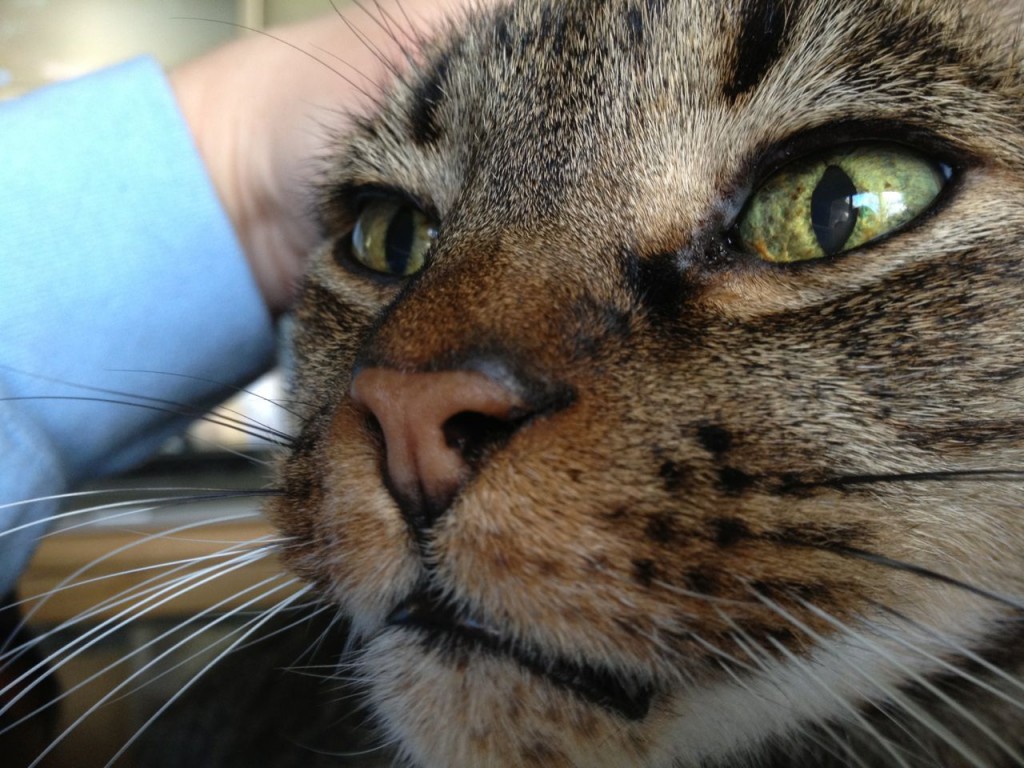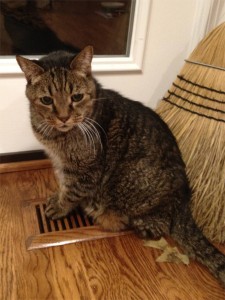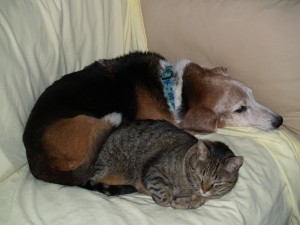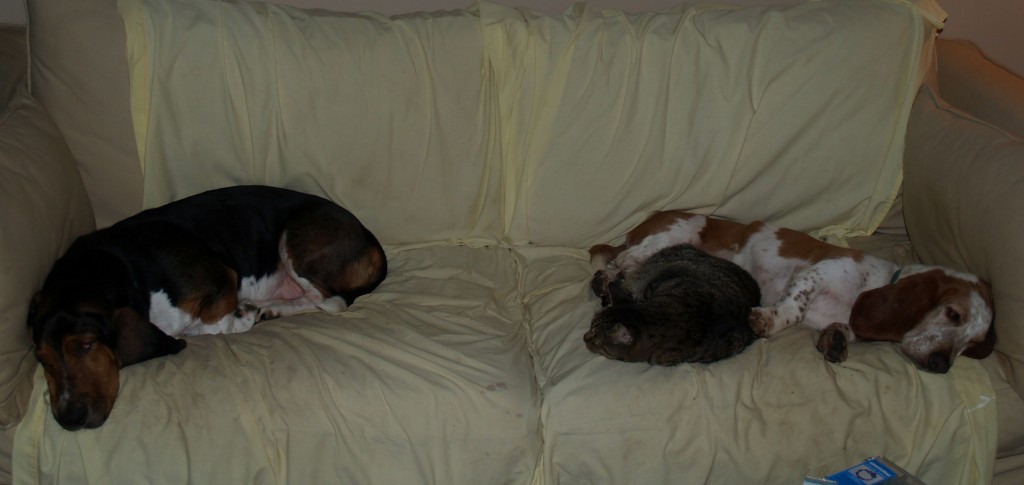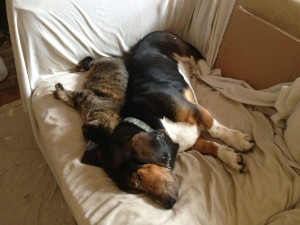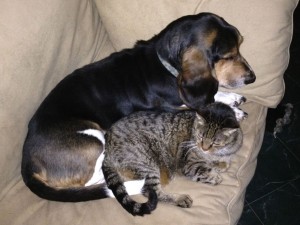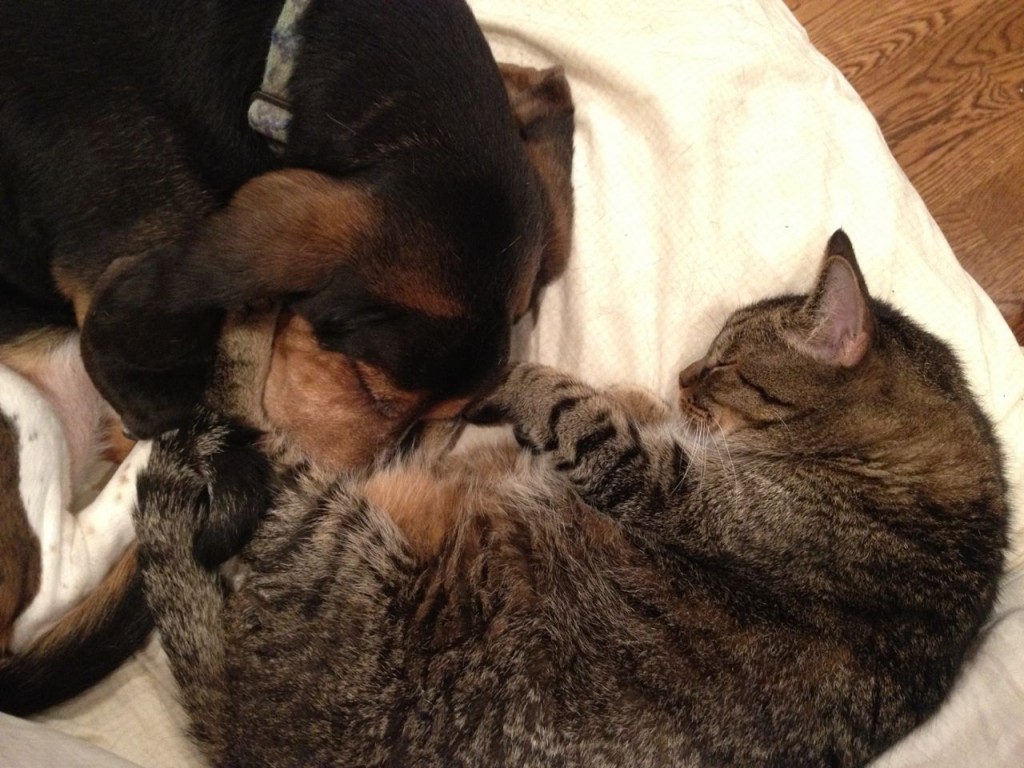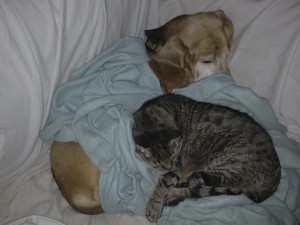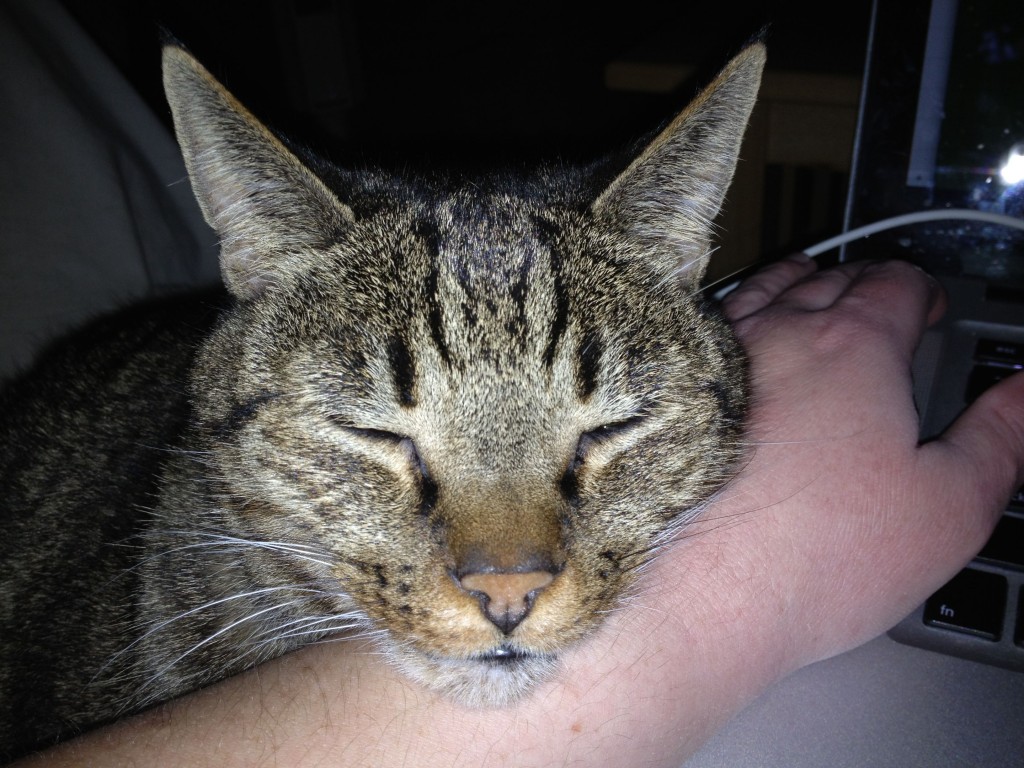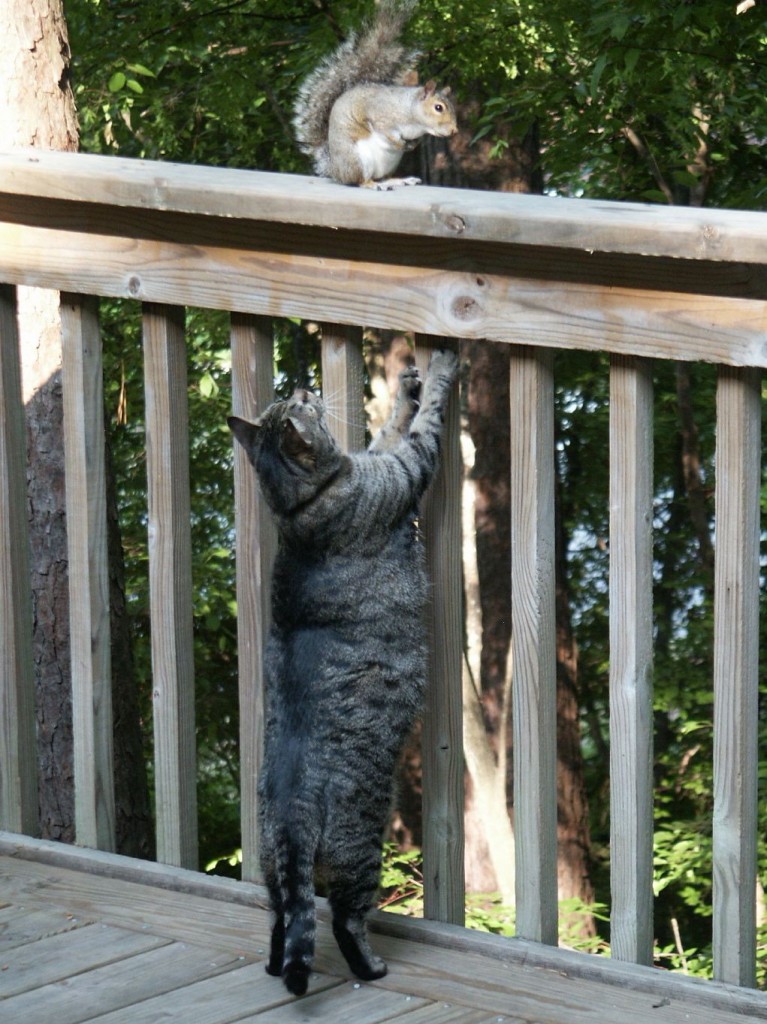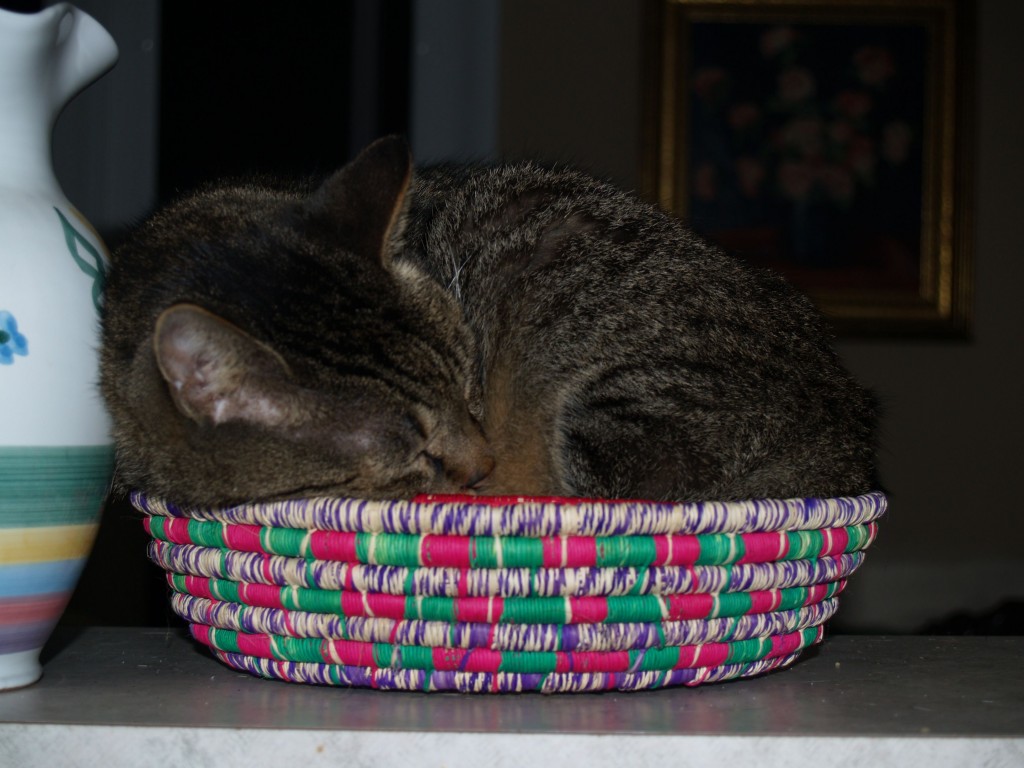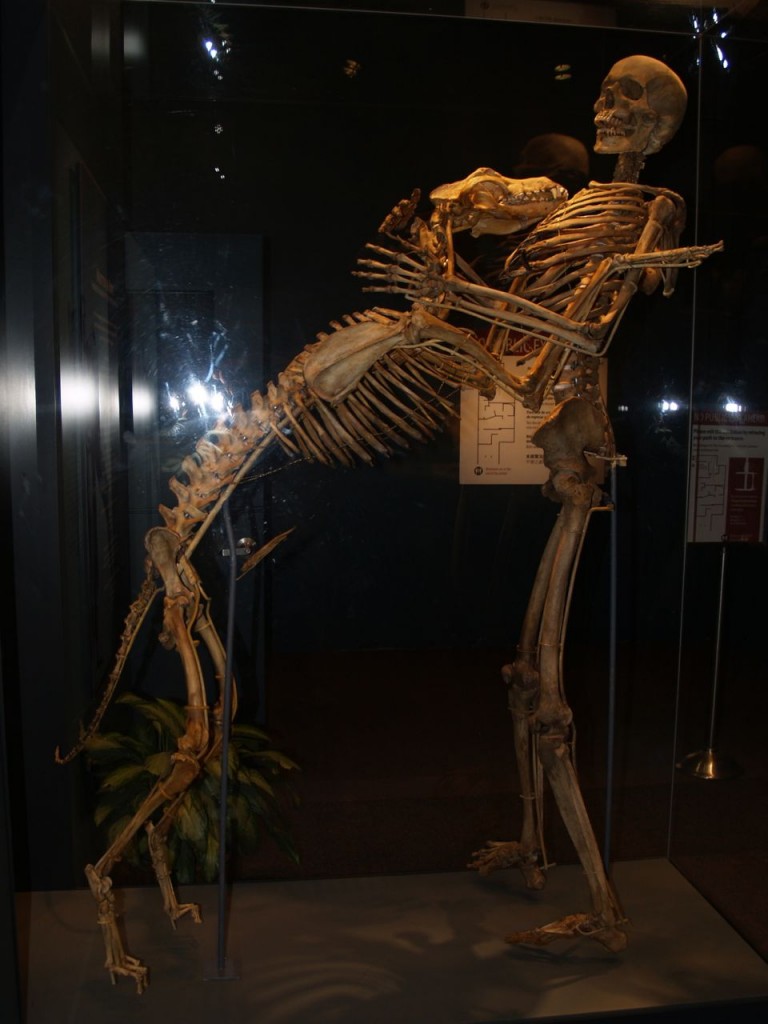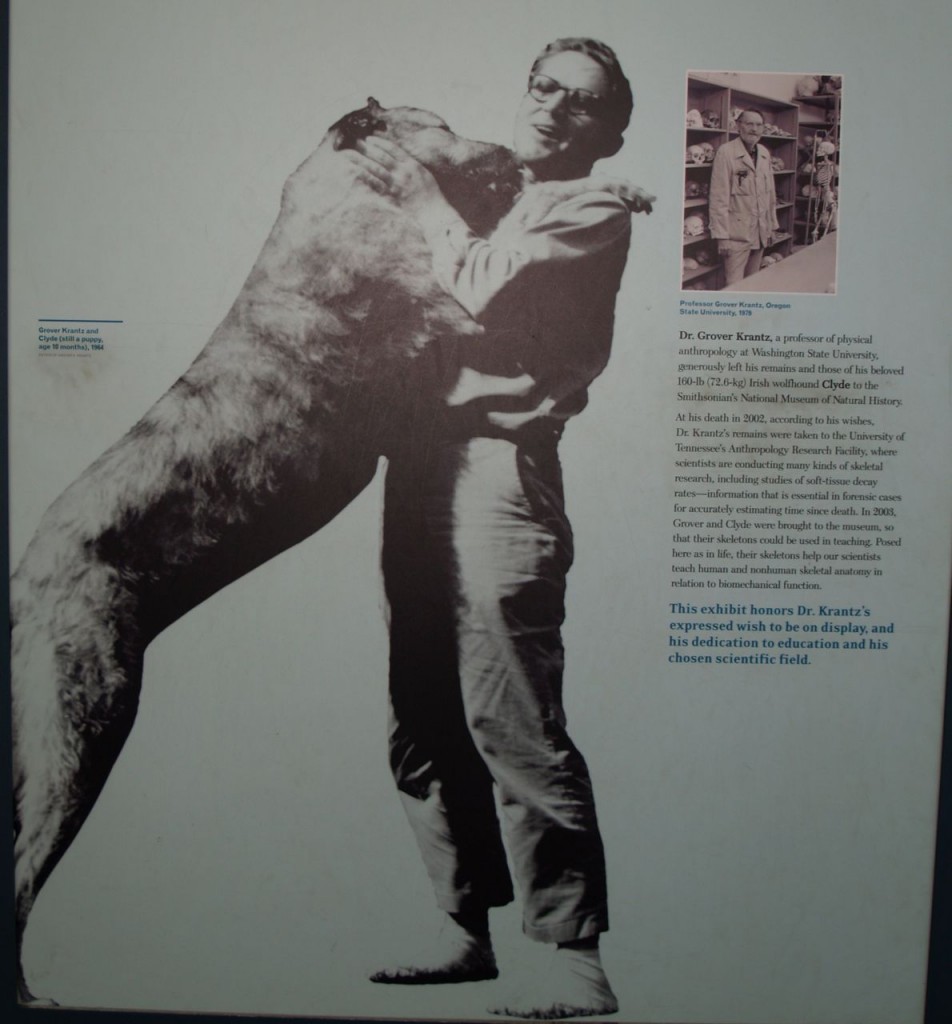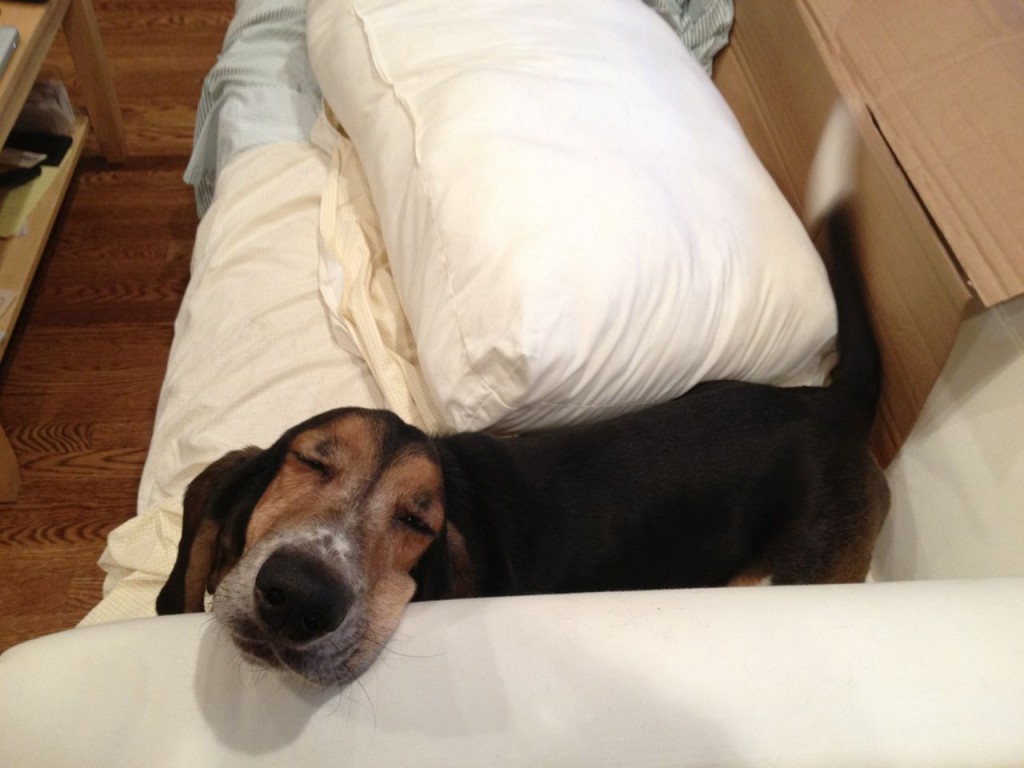Ferdinand loves to hunt rodents and other little animals. These type of animals constantly seem to take refuge underneath the HVAC condenser in my backyard, and then Ferdinand spends hours trying to get to them. Normally this hunting occurs at 2 a.m. Today, he was doing this for about two hours, came in briefly when I called him to dinner, and quickly returned back to the hunt. He is out there as I type. A short video to show the futility of this hunt, but Ferdinand is nothing if not persistent in his hunting.
Tag Archives: dogs
Ferdinand Eats an Apple Core
Almost everyday I eat an apple with lunch. Ferdinand loves apples, so every time I eat an apple, he sits there and drools until I am finished. When I finish, I break the apple core into bits so that I can remove the seeds. [Apple seeds have a small amount of cyanide in them, so I remove them just to be careful.] Then Ferdinand sits there patiently while I feed him apple bits. He really has a hard life. As you can see in the video, the poor dog has to lift his head to eat his treat.
Puck the cat: In memoriam
This morning I put my 17 year old cat to sleep. Several years ago he developed early kidney disease. It stabilized with a diet change, but then a year ago, he developed diabetes. I have been giving him insulin shots for a year now, but all of the sudden his kidneys started failing. He spent several days in the hospital last week and was doing better, but then he got worse again. He hasn’t been eating well and was getting weak. I didn’t want him to ever be in pain. A visit to the vet this morning made it clear that he did not have much time left. I didn’t want him to die alone or without me. I hope he knew how much I loved him and that I put him to sleep to make sure he had a peaceful, pain free death.
I adopted him and his littermate Ariel when they were kittens, and I was in graduate school pursuing my Master’s degree. I had just lost my first cat Bestoff (long story on the name), really the family cat, which I brought with me to graduate school. Bestoff was a tabby, and Puck and Ariel, both tabbies, reminded me of him. It was with Puck and Ariel that I started my tradition of naming my animals after Shakespeare characters. I wanted to name them names on a similar theme, so I finally decided on Puck and Ariel, two fairy or spirit Shakespeare characters. My sister suggested if I was going with Shakespeare, I should name them Rosencrantz and Guildenstern, but I couldn’t imagine standing at my back door yelling “Rosencrantz, Guildenstern, dinner!”
Puck was my lap cat. He was a total cuddle bunny. He loved belly rubs, and he loved anyone who would pet him. Several years ago, he had pancreatitis and was in the hospital at North Carolina State Veterinary School for a week. They took wonderful care of him, and when I came to take him home, one of the vet techs admitted that they were kind of hoping that I would not come back for him. They wanted to keep him. Years ago, a friend of mine was pet sitting for me, and she said that she had walked by him laying on the back of the couch. He reached out his front paw, and with one claw grabbed her skirt until she came back and petted him.
Puck has lived with me in four homes, three states, four basset hounds (three adopted, one foster), and two other cats. He has been with me through a Master’s degree, three jobs, a Professional Engineer’s license, and a Doctor’s degree. He was always ready to be in my lap. He always welcomed basset hounds into the house because he found they made very fine pillows next to which or on top of which he could sleep. As a bonus, my lap or the basset hound was also a nice heating pad. He was a smart kitty. As long as I was with him, he was perfectly happy with whatever, including going to the vet in a bag on the bus. Please allow the indulgence of sharing a few photos of him.
He knew how to stay warm in the winter. He simply sat on top of the vent.
The lump in the covers next to him is actually Beatrice the cat under the covers.
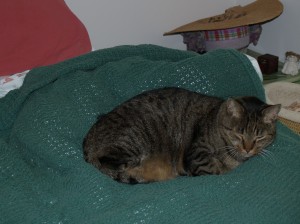 Cuddling with Hamlet, my first basset hound.
Cuddling with Hamlet, my first basset hound.
Sleeping with Ferdinand and Thisbe, the basset hounds.
WIth Ferdinand
One more with Ferdinand, but this is more a tribute to the patience of Ferdinand. One of Puck’s hind feet is in Ferdinand’s ear and the other is in his eye.
With Ferdinand, right, and Horatio, upside down, my foster dog.
 Are you noticing a theme with the photos? This photo with Horatio, the foster basset hound, was taken three days after Horatio moved in. Puck wastes no time making use of a basset hound as a pillow. Actually, I took this photo as Horatio was recovering from an adverse reaction to the ivermectin I had just given him. I covered him up in a blanket to keep him warm, and Puck came over to give him comfort.
Are you noticing a theme with the photos? This photo with Horatio, the foster basset hound, was taken three days after Horatio moved in. Puck wastes no time making use of a basset hound as a pillow. Actually, I took this photo as Horatio was recovering from an adverse reaction to the ivermectin I had just given him. I covered him up in a blanket to keep him warm, and Puck came over to give him comfort.
Puck didn’t like my laptop so much, as that meant my lap was occupied, and I was not petting him. Here he lets me know what he thinks of that.
Sometimes both Ferdinand and Puck would try to push the laptop out of the way. Puck would generally just end up on top of Ferdinand.
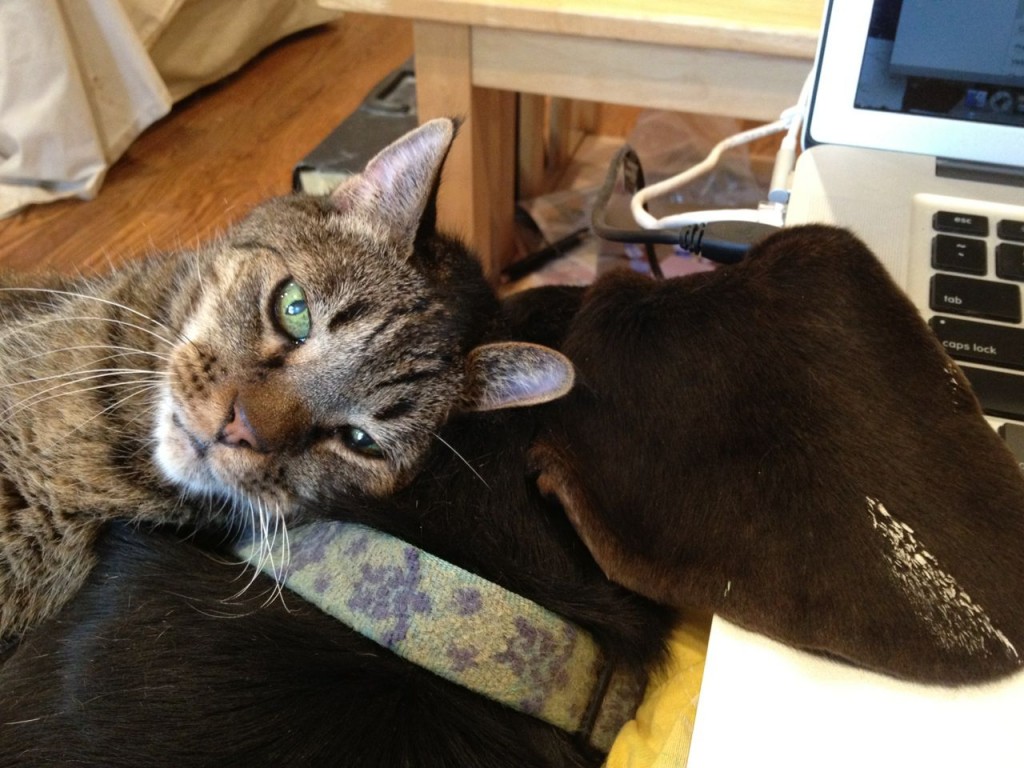 I am going to miss my Pucky so much. He gave me so much comfort and love. He kept me warm on cold nights. He let me cry on him when I had to put Hamlet and Ariel to sleep. I know some people think cats are unaffectionate and aloof, and some are, but not Puck. He just wanted to cuddle. Ok, in his younger days, he liked to chase bugs. Perhaps a few squirrels. The squirrels were afraid of him.
I am going to miss my Pucky so much. He gave me so much comfort and love. He kept me warm on cold nights. He let me cry on him when I had to put Hamlet and Ariel to sleep. I know some people think cats are unaffectionate and aloof, and some are, but not Puck. He just wanted to cuddle. Ok, in his younger days, he liked to chase bugs. Perhaps a few squirrels. The squirrels were afraid of him.
Goodbye my Puck. Rest in peace my love.
A heart tugging, scientific exhibit
At the Smithsonian’s National Museum of Natural History is, in my opinion, one of the most moving scientific exhibits I have ever seen. Yes, I am a softie, especially when it comes to animals, but this exhibit almost brought me to tears. It is an exhibit of two skeletons, a man and an extremely large dog, but not just any man and dog. The human skeleton is Dr. Grover Krantz, a professor of physical anthropology at Washington State University, and the dog is his Irish wolfhound Clyde. While the skeletons have scientific value, the fact that Dr. Krantz wanted his remains used for his scientific field after death is a wonderful testament to his love of his chosen scientific field. The fact that Dr. Krantz wanted to be immortalized with his beloved dog is what almost brought me to tears. Rest in peace, Dr. Krantz and Clyde. I’m sure you are both happily together in heaven.
The sign accompanying the exhibit is below, and I have quoted the text below it.
Dr. Grover Krantz, a professor of physical anthropology at Washington State University, generously left his remains and those of his beloved 160-lb (72.6-kg) Irish wolfhound Clyde to the Smithsonian’s National Museum of Natural History.
At his death in 2002, according to his wishes, Dr. Krantz’s remains were taken to the University of Tennessee’s Anthropology Research Facility, where scientists are conducting many kinds of skeletal research, including studies of soft-tissue decay rates — information that is essential in forensic cases for accurately estimating time since death. In 2003, Grover and Clyde were brought to the museum, so that their skeletons could be used in teaching. Posed here as in life, their skeletons help our scientists teach human and nonhuman skeletal anatomy in relation to biomechanical function.
This exhibit honors Dr.Krantz’s expressed wish to be on display, and his dedication to education and his chosen scientific field.

